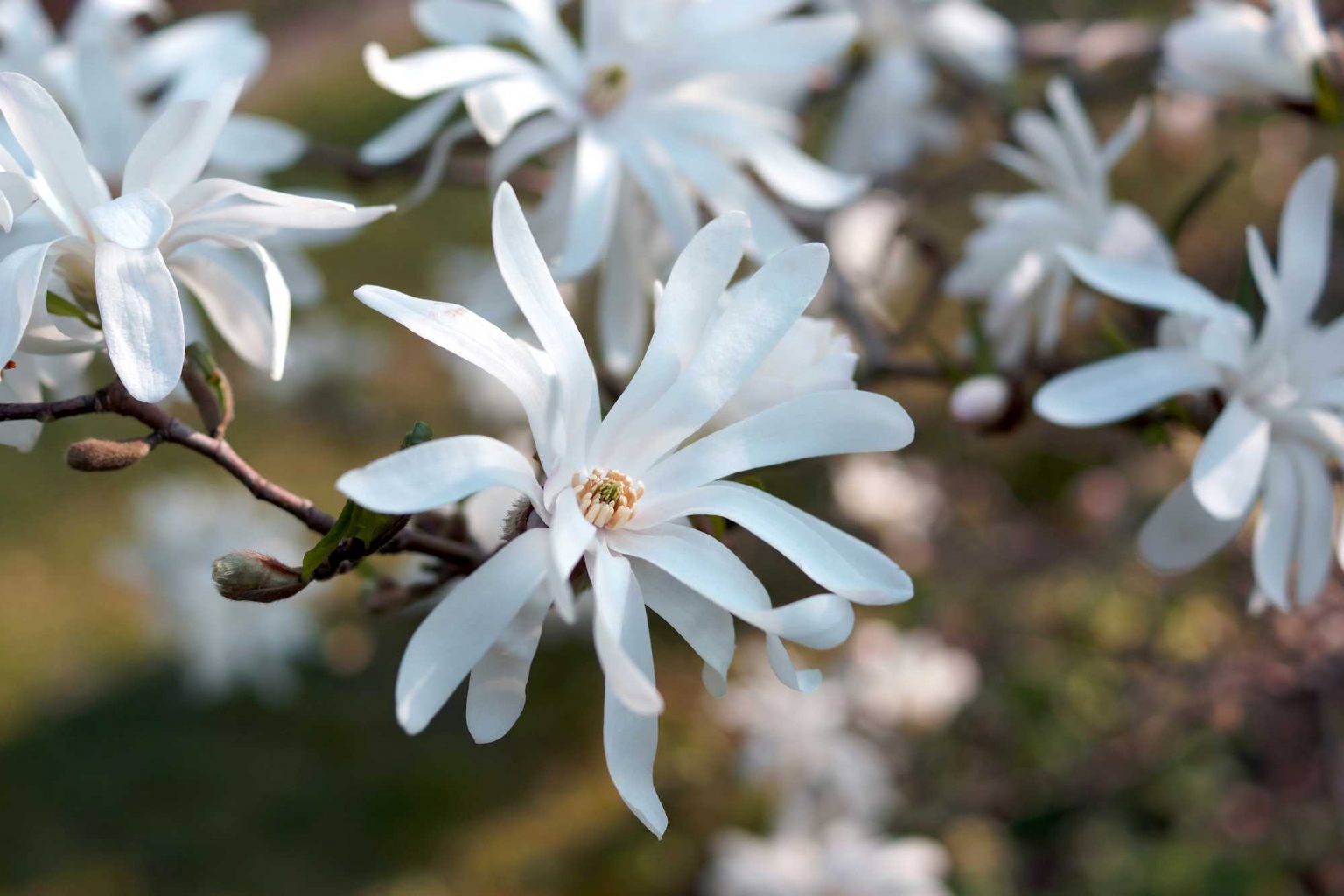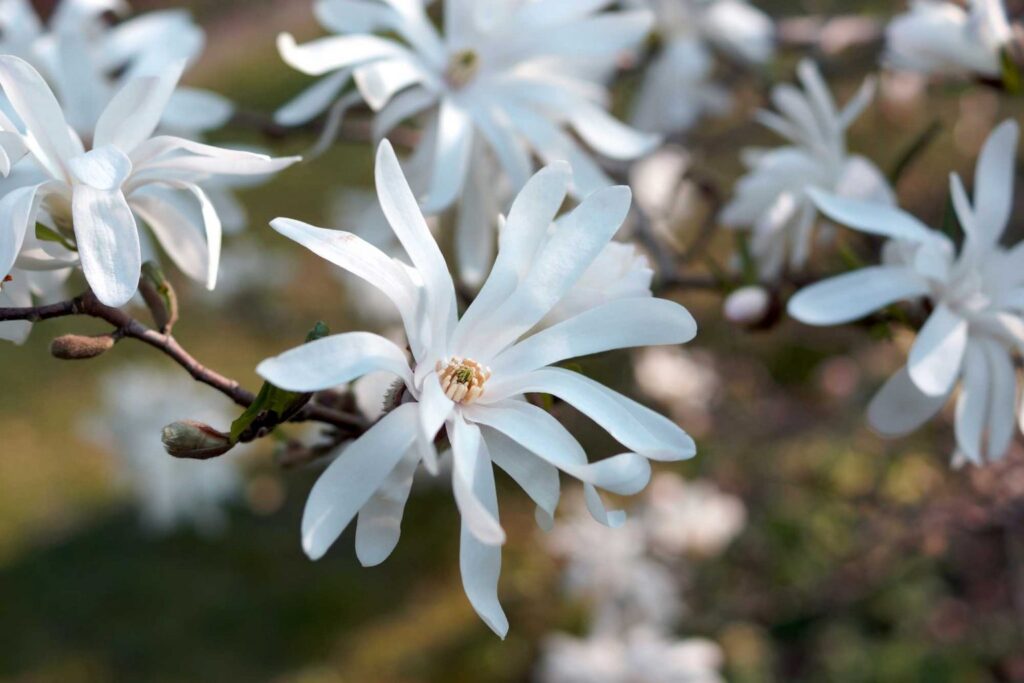
Fans of early bloomers swear by it, the Magnolia Stellata or Star Magnolia . It must be said that this small tree has more than one asset for your garden: it flowers early, from February, often signaling the end of winter; its light green foliage in spring turns yellow in autumn; and above all, it is the most floriferous of the magnolias !
What there is to know :
Name: Star magnolia
Botanical name: Magnolia stellata
Family: Magnoliaceae
Height and Spread: This small tree forms a compact, dense, rounded silhouette generally not exceeding 3 m in height and width. The growth of Magnolia Stellata is slow.
Foliage: Deciduous. It is covered in spring, after flowering, with beautiful light green leaves which turn golden yellow in autumn, before falling.
Flowering: It is covered with silver hairy flower buds which grow all winter long before bursting out in mild climates, from February or March, its numerous star-shaped flowers 10 cm in diameter. They are composed of 12 to 15 narrow, pure white petals and exhale a light vanilla scent .
Exposure: In the sun or in partial shade, but sheltered from cold winds which quickly damage its flowers.
Soil: Garden soil that is not too calcareous and enriched with compost suits it well. But it grows and flowers best if the soil is rich, slightly acidic, well drained and especially when it stays cool in summer. Be careful, the water should never stagnate at his feet !
Hardy: down to -15°, the Star Magnolia is perfectly resistant to the coldest winters , but its flowers can be destroyed by frost.
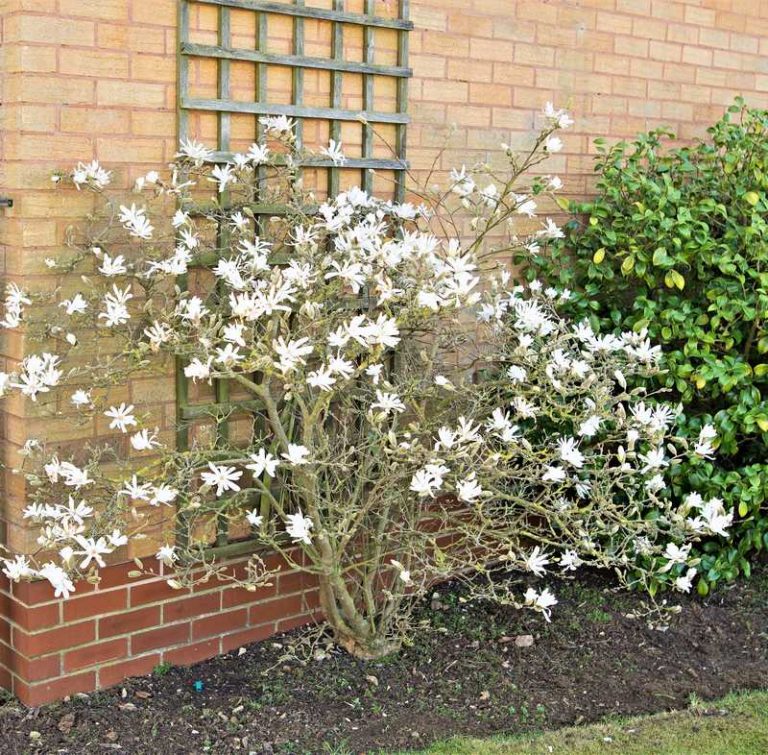
Where to plant a star magnolia?
With its slow growth , the Magnolia stellata is the ideal shrub for small gardens . You can plant it:
- In a massif, in the company of other heather earth shrubs . It goes well with Japanese maples , Japanese azaleas or early-flowering shrubs such as Forsythia or Japanese Cognassier .
- In isolation on a lawn.
Under a star magnolia, a carpet of bulbs (Wood hyacinth, Snowdrop, spring snowflake , Cyclamen Coum ) quickly naturalizes and accompanies its superb white bloom .
Planting Magnolia Stellata
In cool areas, choose a sunny location sheltered from cold winds to protect the flowers from late winter frosts.
In hot regions in summer, a location in partial shade is preferable.
The soil must be draining so that the water infiltrates quickly and acid (PH 6 – 6.5) or neutral.
Plant this heather shrub between November and early spring , preferably when young, so that it adapts easily to your garden. Choose a container star magnolia . Its silhouette must be well balanced. If it is in flower, wait until it has finished flowering before planting.
Here are the stages of this planting :
- Dig a wider-than-deep hole 80 cm in diameter and 60 cm deep.
- If your soil is slightly calcareous, mix the same amount of heather soil with the extracted soil. If the soil is neutral or slightly acidic, heather soil is not essential.
- Unpot the magnolia from its container, carefully untangle its roots.
- Then install your shrub in the center of the hole, making sure to spread its roots well at the bottom.
- Backfill with the prepared soil mix, tamp it down firmly with your hands, then pour in plenty of rainwater.
- Finally, spread a layer of pine bark mixed with mature compost on the surface.
The installation of this elegant shrub is quite long. It is not uncommon for it to vegetate without flowering for a few years before starting to really grow. Count 5 years on average.
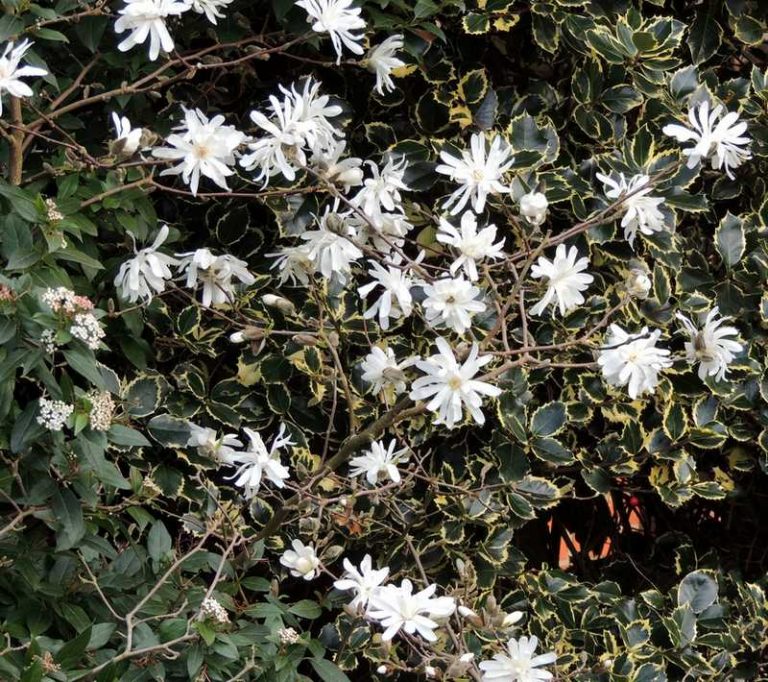
Maintenance of the Magnolia Stellata
Easy to grow, the star magnolia needs little care . It flowers from the first year of its plantation.
watering
The first year, water your magnolia stellata very regularly so that it can settle in perfectly. Its fleshy roots, fragile and rather superficial, fear drought. In the following years, it is no longer useful to give it water, with the exception of regions with hot summers.
In order to limit the drying out of the earth, mulch its feet with pine bark or crushed branches.
Does the star magnolia fear frost?
Yes and no. This small ornamental tree is very resistant to cold as long as its buds do not open. It is its early flowering that remains fragile: it can be completely destroyed by a strong frost. That is why, in regions with late frosts , it is better to grow a variety that flowers a little later than others like Royal Star.
The early flowers of the Star Magnolia also cannot stand the rain .
Diseases of Magnolia Stellata
If left unpruned, the Star Magnolia is immune to disease . There is therefore no processing to be carried out.
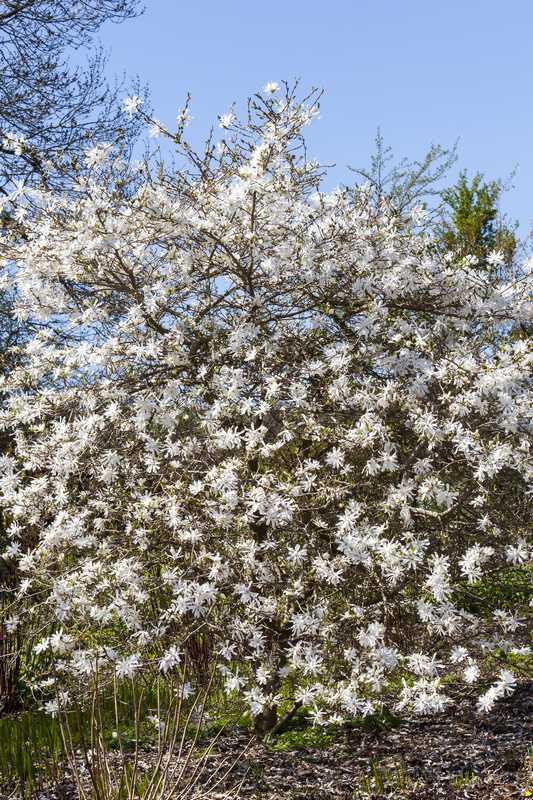
How to prune a star magnolia?
The Magnolia stellata grows regularly but quite slowly. It is therefore not necessary to prune it .
Nevertheless, an accompanying size can be practiced to ventilate the silhouette if it seems neglected to you or when your star magnolia takes up too much space .
- Intervene once the last flowers have faded, between March and April.
- Shorten branches growing vertically.
- Delete those oriented towards the interior of the shrub in order to keep only those facing the garden.
Pot and tray culture of Magnolia stellata
Due to its slow growth, it is perfectly possible to grow this beautiful shrub in a pot or container (30 cm in diameter or more) on a balcony or terrace .
Mix 1/3 garden soil, 1/3 heather soil and 1/3 very fine pine bark. Mulch the plants of your magnolia stellata all year round, this will limit watering and prevent the roots from drying out.
Remarkable varieties of star magnolia
- Magnolia Stellata Centennial : With large flowers with slightly pink white petals.
- Waterlily : With pure white starry flowers made up of 15 to 18 petals and bearing a light pink border, very light.
- Rosea : with pinker flowers than the others
- Royal Star star magnolia : a small shrub with larger flowers (10 to 15 cm), pink in buds then completely white when they open.

